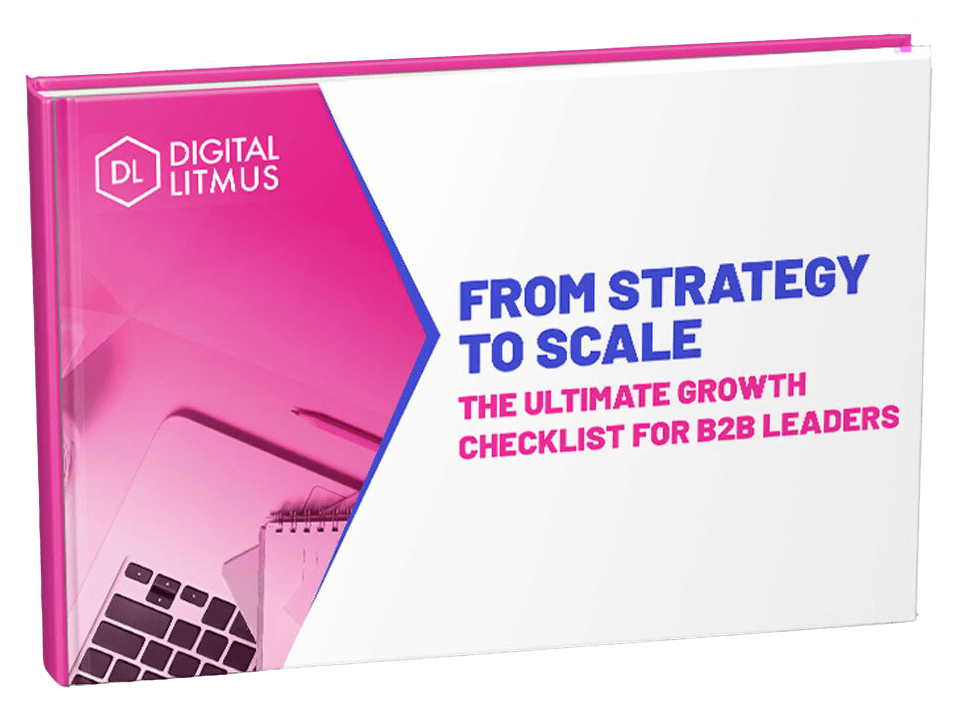Your website is more than just a digital brochure; it’s the backbone of your B2B growth strategy. A high-performance website does much more than look good – it drives leads, conversions, and business growth. At Digital Litmus, we’ve seen first-hand how a well-optimised website can transform a business, making it easier to connect with prospects, deliver value, and convert visitors into loyal customers.
In this blog, I'll take you through the key components of building a high-performance B2B website. Whether you're launching a new site or optimising an existing one, these elements will help ensure your website becomes a powerful growth engine for your business.
Technical Foundations: The Bedrock of a High-Performance Website
Behind every beautiful website lies a strong technical foundation. This is where the magic happens – or, in some cases, where things fall apart. Site speed, security, and mobile responsiveness are crucial technical elements that impact both user experience and search engine rankings. If your website is slow, insecure, or difficult to use on mobile devices, you're essentially creating roadblocks that prevent potential customers from engaging with your brand.
Start by ensuring your website is fast. Today’s users expect pages to load in the blink of an eye, and search engines like Google favour faster sites. Optimising your website's speed can drastically reduce bounce rates and keep visitors engaged. But speed isn’t the only concern; security is equally important. A secure site builds trust with your audience, and using HTTPS is non-negotiable, particularly with Google penalising sites that lack it.
Don’t forget mobile responsiveness. More and more B2B buyers are using their mobile devices to browse and engage with brands. Ensuring your site works seamlessly across all devices isn’t just a nice-to-have; it’s essential for providing a top-notch user experience.
Regular technical audits should be part of your ongoing website maintenance to ensure everything stays in peak condition. These audits can help you identify and fix any underlying issues that could negatively impact performance.
Information Architecture: Creating a Clear and Intuitive Structure
Think of your website as a well-organised library. When visitors arrive, they should be able to quickly find the information they need without feeling overwhelmed or lost. This is where information architecture (IA) comes in – it's all about creating a clear, logical structure that guides users to the right content effortlessly.
Good IA starts with mapping out your website's structure. Consider how your users navigate through your site and what journey you want them to take. Categories, menus, and pathways should all make sense from the visitor’s perspective. An intuitive structure doesn’t just make your site more user-friendly; it also improves your conversion rates by making it easier for prospects to engage with your content.
Don’t make users dig through layers of menus to find your key offerings. Keep the most important information easily accessible, and ensure that your navigation is simple, direct, and consistent across all pages.
Design and Usability: Making Your Website Visually Appealing and Easy to Use
Your website design isn’t just about aesthetics – it’s about usability, too. A visually appealing website can draw visitors in, but it's the ease of use that keeps them there. For B2B websites, where decisions are often more complex, a clean, professional design that reflects your brand's identity is crucial.
Great design is about more than just looking good; it’s about creating a seamless user experience. Prioritise usability by ensuring that your website is easy to navigate, with clear calls to action (CTAs) and a logical flow. Every element on your site should be intentional, guiding visitors toward their next step.
Cross-device compatibility is another vital aspect of design. Your site needs to offer a seamless experience whether visitors are on a desktop, tablet, or mobile. Regular testing across devices ensures that your website looks and functions as intended, no matter how it’s accessed.
Calls to Action: Guiding Your Visitors Towards Conversion
Calls to action (CTAs) are the pivotal points on your website where visitors turn into leads. Whether it's downloading a resource, signing up for a newsletter, or booking a consultation, a well-crafted CTA can make all the difference in driving conversions.
CTAs need to be clear, compelling, and actionable. Instead of vague phrases like "Learn More," use direct, specific language that tells the visitor exactly what they’ll get. For example, “Download Your Free Guide” is much more enticing and informative.
Placement is key. Your CTAs should stand out visually and be strategically positioned on your pages – don't just slap them at the bottom of the page and hope for the best. A/B testing different variations of CTAs can also help you determine which ones are most effective at driving conversions.
Forms and Funnels: Optimising for Lead Generation
Forms and conversion funnels are critical components of a high-performing B2B website. But there’s an art to getting them right. Ask for too much information upfront, and you’ll lose potential leads. Keep it too minimal, and you might not get the details you need to qualify those leads.
The key is to strike a balance. Keep your forms simple and focused, asking only for the most necessary information. If possible, use progressive profiling to gather more data over time rather than asking for everything all at once. Test different form designs and placements to see what drives the best results.
Optimising your conversion funnels is equally important. Every step of the journey, from landing page to thank-you page, should guide users smoothly towards conversion, minimising friction at every turn. When your funnels are well-designed, they help maximise the number of visitors who complete your desired actions.
SEO: Boosting Visibility and Driving Traffic
Last, but certainly not least, let’s talk about SEO. Search engine optimisation is what ensures your website gets found by the right people. It’s not just about technical SEO – making sure your site is crawlable and indexable – but also about on-page SEO, which focuses on optimising individual pages for search engines and users alike.
Start with a technical SEO audit to make sure there are no barriers preventing search engines from properly crawling your site. Fix any issues with sitemaps, robots.txt files, and URL structures to keep everything in good order.
Then, focus on on-page elements like meta tags, headings, and content. Your content should be high-quality, keyword-rich, and designed to meet the needs of your audience. Remember, SEO isn't just about ranking – it's about delivering value to your visitors.
Conclusion: Your Website is the Cornerstone of Your Digital Strategy
Your website is more than just a digital shopfront – it’s the cornerstone of your entire digital strategy. When optimised for performance, usability, and SEO, it becomes a powerful tool that drives growth and supports your business objectives.
If your website isn’t performing at its best, now’s the time to assess and optimise. By focusing on these key elements, you can ensure your site not only attracts visitors but converts them into long-term customers.
Ready to take your website to the next level? Check out our B2B website agency services and get in touch with us for a website audit and tailored recommendations.

Are you a B2B company looking to accelerate growth?
Our connected sales, marketing, and HubSpot agency services might be just the ticket. Get in touch for your free growth assessment to find out how you can accelerate business growth today.





